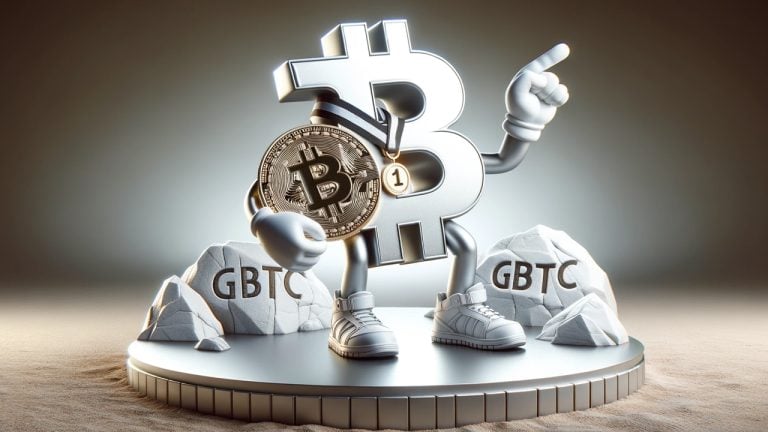
BTC futures open interest is on the rise, but Bitcoin trading volume suggests that traders have shifted their attention to other markets.
Bitcoin (BTC) traders are currently not pleased with the recent price trends, especially due to the inability of its price to surpass the $30,500 mark over the last four weeks. This frustration is compounded by the fact that several requests for spot Bitcoin exchange-traded funds (ETFs) are either being delayed or pending review from regulators.
Interestingly, there has been a noticeable uptick in the open interest of Bitcoin's futures contracts, which likely indicates increased demand from institutional traders. On the other hand, activity in the derivatives markets has been lackluster. This contrast in market dynamics has led to a mixed sentiment among investors, making it challenging to gather enough momentum for trading at or above the $31,000 level.

The main factor cited by many analysts for the lack of buyers driving Bitcoin above the $30,000 mark is the reports surrounding the United States Department of Justice considering fraud charges against Binance. Additionally, the U.S. Securities and Exchange Commission (SEC) and the Commodity Futures Trading Commission (CFTC) currently have their own legal actions against the exchange and its founder, Changpeng “CZ” Zhao.
Macroeconomic forces partially explain Bitcoin investors’ discomfort
Taking a broader view of the situation, there is an added concern regarding the potential global economic recession triggered by the efforts of central banks to control inflation. The most recent U.S. core Consumer Price Inflation (CPI) figures, which exclude food and gas prices, saw a 4.7% rise compared to the previous year, following a 4.6% increase in June. This data supports the ongoing initiatives to tighten the economy, favoring investments in fixed income, short-term bonds and cash positions.
As a result, despite the consensus projecting the Federal Reserve to maintain the interest rate cap at 5.5% during the upcoming September meeting, investors lack the motivation to increase their positions in risk-on markets. This reluctance stems from the growing likelihood of a recession, evident through the 1.4% decline in Eurozone retail sales year-over-year in June and the U.S. ISM Manufacturing PMI registering at 46.4 in July, which indicates a state of contraction.
When examining the price as an indicator, it becomes apparent that Bitcoin investors are currently not displaying significant confidence in the likelihood of a near-term approval for a spot ETF. At the same time, there is a notable sense of pessimism surrounding the ongoing legal challenges faced by Binance and the potential repercussions of these challenges. Irrespective of the specific reason, the overall trend of Bitcoin's price over the past 50 days has been predominantly negative, with frequent visits near the $29,000 support level.
Bitcoin derivatives are extremely important for price guidance
The Bitcoin futures market holds immense importance within the trading landscape. This market encompasses cryptocurrency-exclusive derivatives exchanges like Binance, Bybit, and OKX, as well as established traditional financial platforms such as the Chicago CME exchange. In essence, futures contracts are financial agreements between two parties, wherein actual BTC doesn't change hands. However, the appeal of leverage enables this market to surpass the trading volumes typically seen in regular buying and selling.

According to data from Coinglass, on August 8, trading activity within this market surged to approximately $14.5 billion, approaching levels reminiscent of those observed back in May 2022. It could be argued that these contracts are continuously balanced between buyers (longs) and sellers (shorts). However, the expansion of this market allows larger-scale investors to participate and attracts traders employing various strategies, including "cash and carry" approaches and miners seeking risk mitigation.
Nevertheless, the growing number of active contracts, as evident from open interest, does not necessarily equate to increased trading activity within the futures market. In reality, the volume associated with Bitcoin futures has experienced a downward trajectory over the past seven months.
Related: 5 things crypto must get right for mainstream adoption to happen

Recent data points out that trading volumes for BTC futures have dropped to their lowest levels since December 2022, averaging below $7 billion per day. This suggests that traders are either fully protected against risks and not inclined to make further moves at the current price levels, or they have shifted their focus to other markets with higher volatility or better odds of significant changes.
The situation boils down to this: until there's some clear confirmation about the ETF decision and more defined rules about exchanges like Binance and Coinbase due to their clashes with regulators, traders using Bitcoin derivatives don't seem to have much motivation to make more trades. These significant events, combined with the uncertainty in the broader economy, provide an explanation for the reduced trading activities, even though more people are keeping an eye on the situation and the price is stuck around $29,500.
This article is for general information purposes and is not intended to be and should not be taken as legal or investment advice. The views, thoughts, and opinions expressed here are the author’s alone and do not necessarily reflect or represent the views and opinions of Cointelegraph.


































